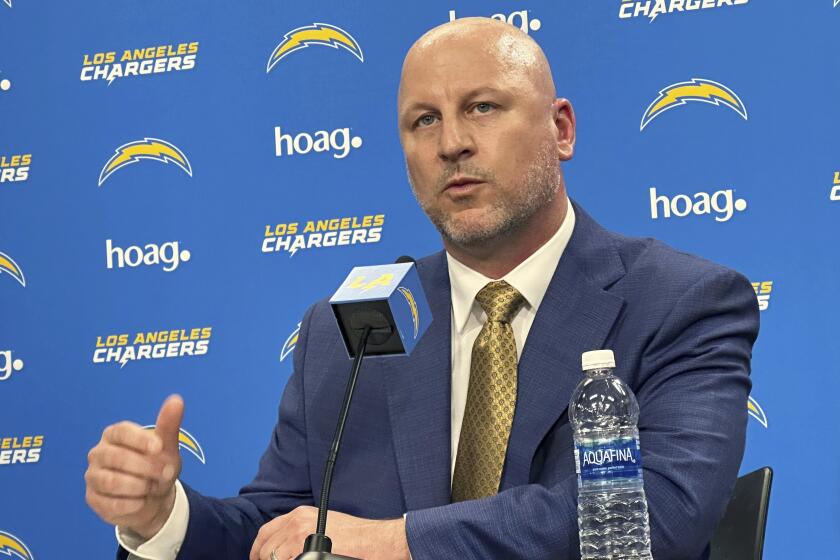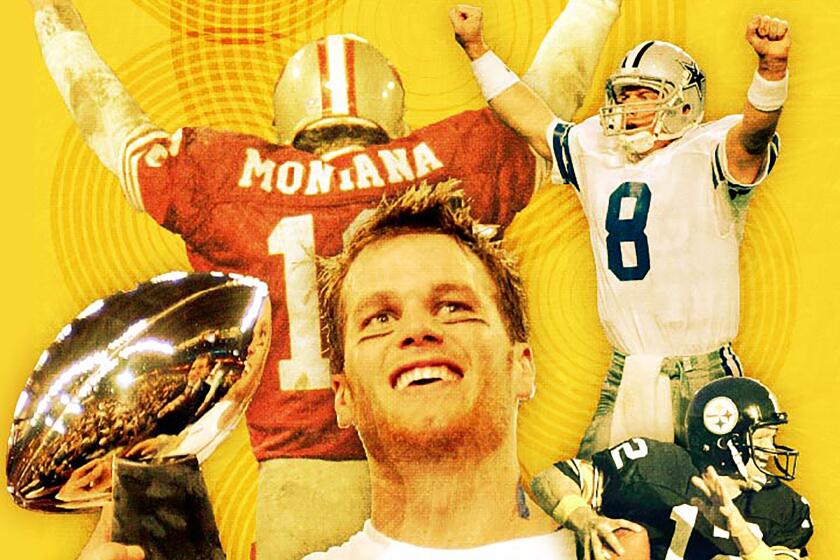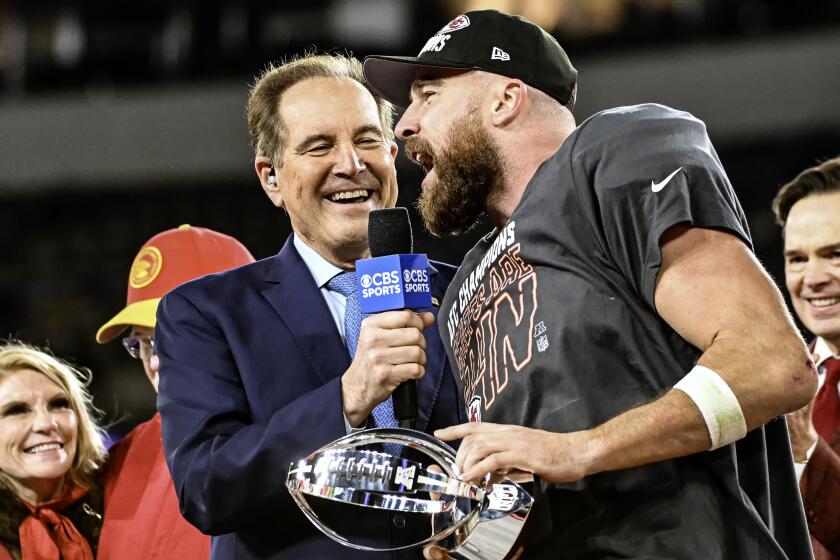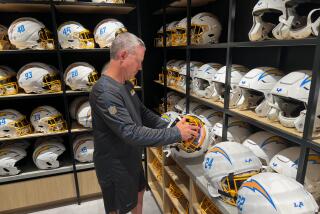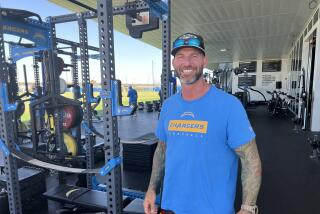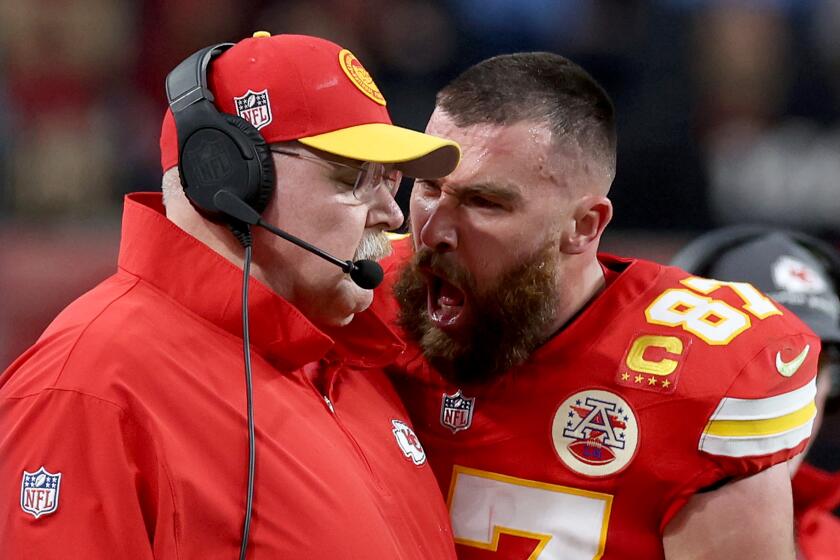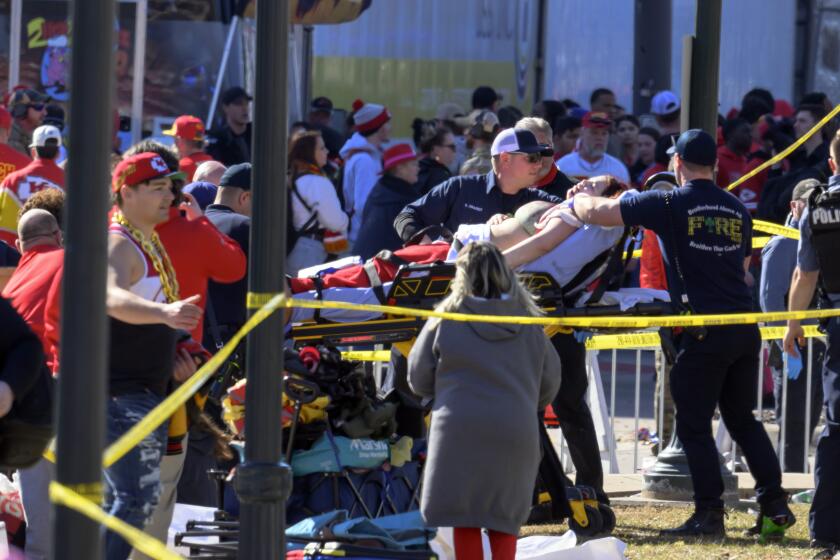Philip Rivers: Antonio Gates was so good, ‘The Gates Rule’ overruled our playbook
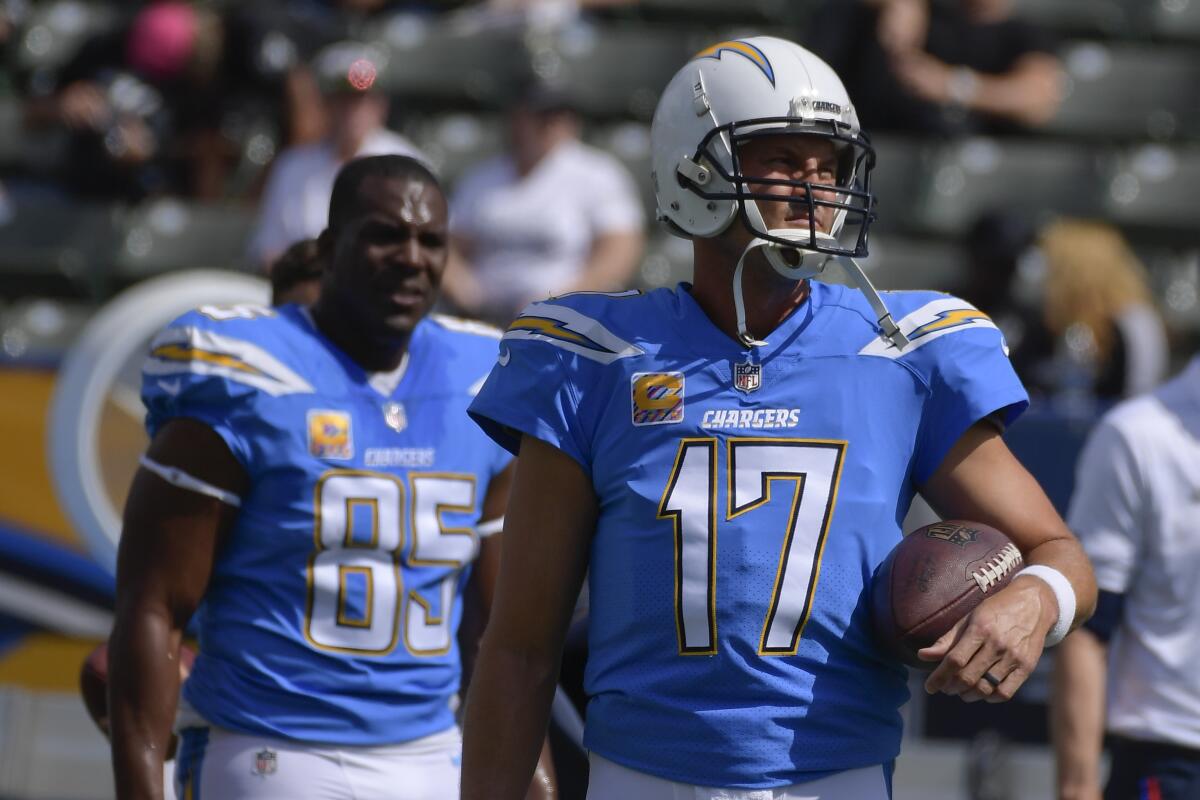
Even though Antonio Gates didn’t play college football, and was a basketball player at Kent State, he rounded into one of the greatest tight ends in NFL history. An eight-time Pro Bowl selection for the Chargers, Gates is a finalist for the 2024 class of the Pro Football Hall of Fame, which will be announced Thursday night at NFL Honors.
Former Chargers quarterback Philip Rivers spoke to Times NFL writer Sam Farmer recently about the greatness of Gates and what set him apart.
In Rivers’ words:
Early in my career with the Chargers, even when I wasn’t playing, we had something in the QB room we called the “Gates rule.”
It’s like, “What’s the read?”
“Gates rule.”
New Chargers GM Joe Hortiz likes the prospect of working with Jim Harbaugh but must deal with the salary cap ahead of the NFL combine and draft.
That just meant if Antonio Gates is one on one, that overrides all other things. We can talk through a read all you want. But if there’s one guy on Gates and you like the matchup, the ball’s going to No. 85.
That’s just how good Antonio Gates was. It was a combination of his physical abilities and some of his character traits. It’s hard to say one was more important than the other. They went hand in hand.
He was big and fast with unbelievable body control and a feel for positioning, all those physical traits, but he’s also as competitive as anybody I’ve ever played with. That could be games in the locker room — dominoes or cards — or games we’d make up. We could be sitting in the sauna and say, “Who’s going to last the longest?” Well, he was going to find a way to be the last one in there.
Sometimes it’s hard for a pass catcher. You always want the ball. You’re always involved. You’re always open — the great ones usually are, in their mind.
But Gates had a real appreciation for the quarterback position. As our friendship grew and he got to know who I was and what I was about, he understood that the task of playing quarterback was tough. You’re not always going to throw it to the right guy. You’re trying to make the right reads, but that doesn’t always happen.
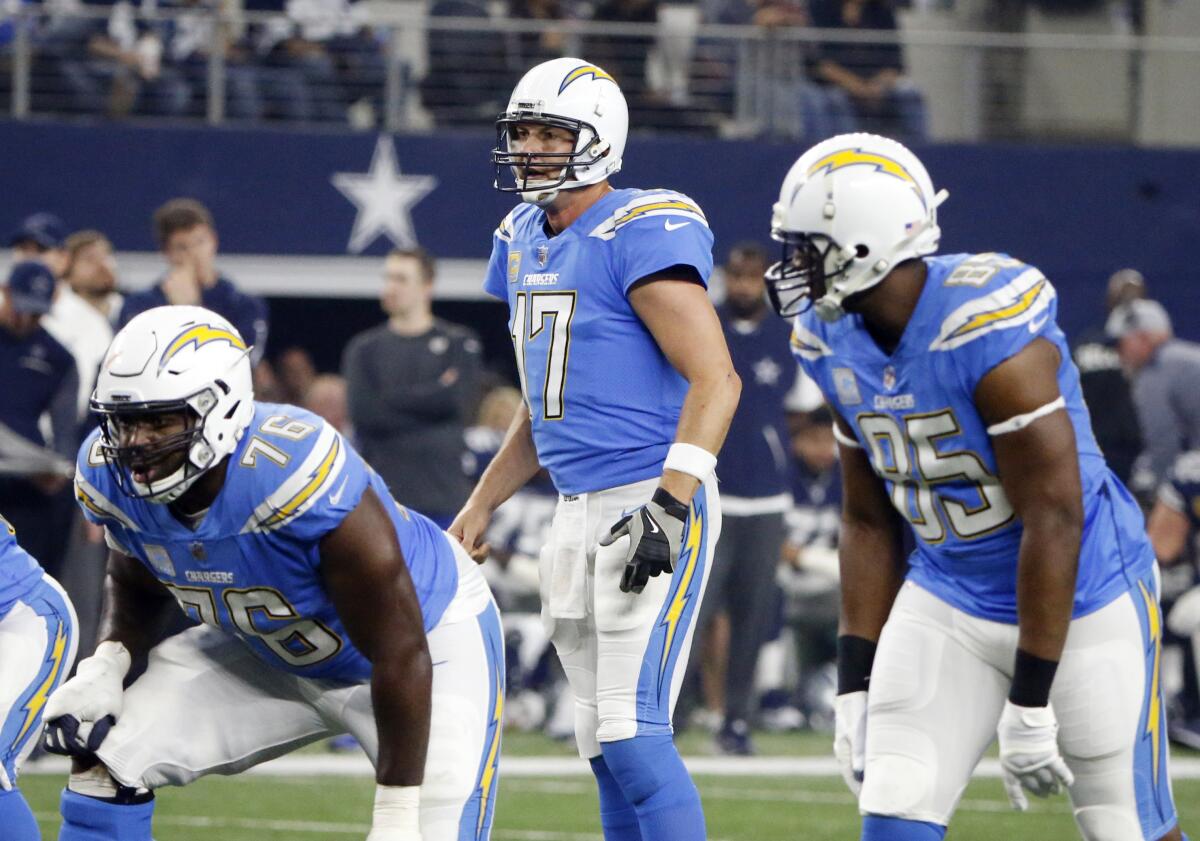
He knew that I genuinely wanted to do the best I could for the team at all times. To me, that was another trait of his that was pretty special. He was never one of those “Why don’t you throw me the ball” guys. There were never any issues. Ever.
Believe me, there’s no guy I wanted to throw to more.
He never complained, but he did have a subtle way of letting me know, “All right now, this is enough. It’s been two or three series and I ain’t touched it.” He would break the huddle and very gently say, “C’mon now.” It was very subtle, and I interpreted that as, “Get the ball to me. It’s time to get going.”
It wasn’t a blow-up. He wasn’t complaining to the coach or the media. It was just a little nudge. And in my mind it was like, “I’m with ya! It’s coming to ya! We’re in a little bit of a rut and I know how to get out of it: Throw to 85.”
There were stretches when we had lots of weapons — Vincent Jackson, LaDainian Tomlinson, Darren Sproles, Malcom Floyd. I had lots of guys to get the ball to. That was a good problem to have. That helped Gates in a lot of ways. He pulled coverage away from them, and those guys would pull coverage away from him and get him isolated on a linebacker or safety.
Winning a Super Bowl transforms good quarterbacks into legends, and after 57 games there are only 34 starters in that winning club.
Gates’ locker was right by mine and we had a blast. He was a guy from Detroit and I grew up in north Alabama, and yet we had more in common than we had differences. I wouldn’t say he loved to argue, but he and I would argue and debate all the time. A lot of arguments about basketball, and he was going to win the argument. He was going to find a way. The man loved to compete.
Of course he knew a lot about basketball. That’s the sport he played in college — not football — and yet he used his basketball abilities on the football field. I don’t think he would say he was a great blocker, but he could subtly use his body like he was backing a guy down in the low post.
And he had to do that. We would run power, and he would have to mix it up with those great pass rushers like Jared Allen and Von Miller, and he would use those same basketball abilities he did when he got to the Elite Eight at Kent State.
As for his abilities as a pass catcher, they were second to none. He could run every route in the book — the deep crossing routes, the shallows. But when I think of Antonio Gates, three routes come to mind, routes that nobody could run better.
First there was the “3 Pivot” — or we’d sometimes call it “Pivot 3” — where he starts like he’s running across the middle, then plants his foot and pivots back out of it. Like a basketball player cutting to the hoop then pivoting back out. It was, “Hey, you’ve got between the hashes, Gates. Do whatever you want.” He had an ability to dress that up in so many ways. He just set guys up.
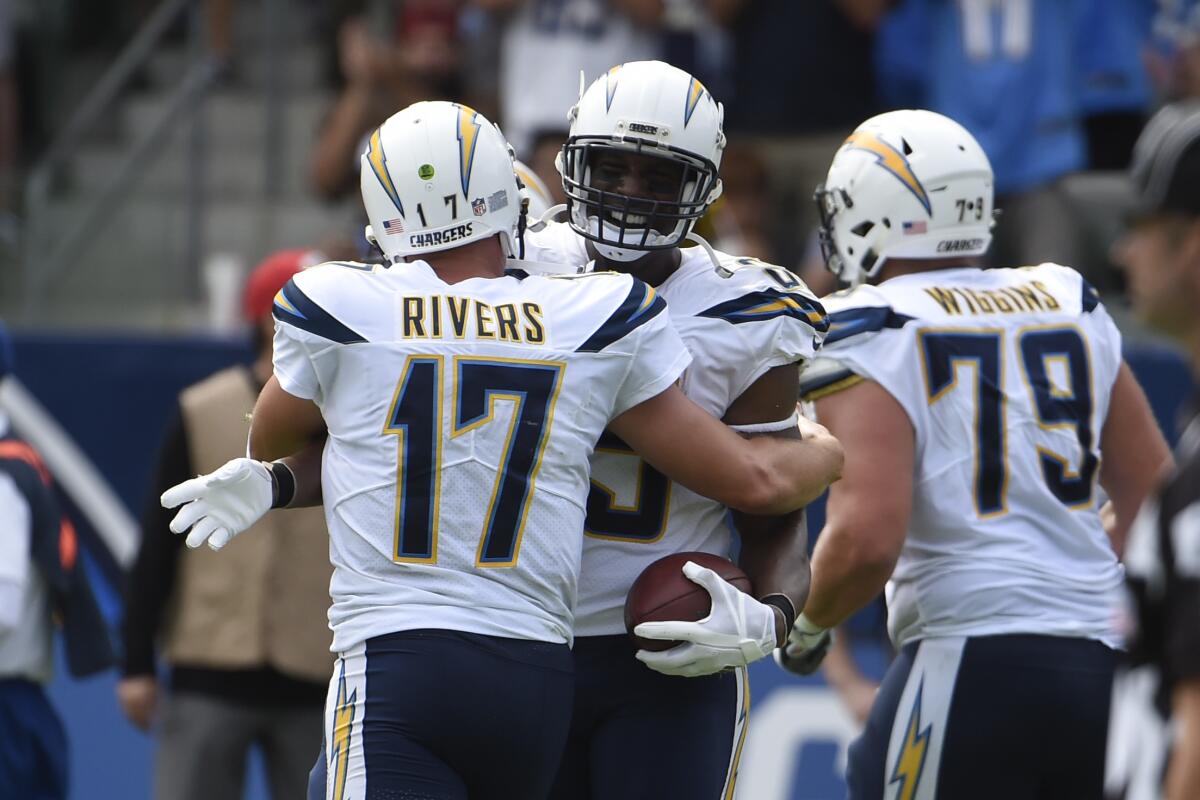
Then there was a 7 route, which was basically a corner.
And finally there was a “Nod 9,” which was a variation off a 7 route. He would lean like he was going to run a corner, then he’d go up the seam. The combination of the 7 and the Nod 9 were unbelievable. That’s where he caught most of his touchdowns.
He just had a way. He was going to win.
Toughness was another great quality of his. The things I saw him play through over 15 years was incredible. Dislocated toe, plantar fasciitis, ribs, just to mention a few. His toughness mixed with his competitiveness and physical talent made him one of the best of all time. I loved being his teammate.
The thing about Antonio was, as great as he was as a player, he was just a regular guy. He was a star, yet he wasn’t too big for the little guys on the team. He’d sit in the cold tub and be there having a conversation with a practice squad tight end and practice squad D-lineman.
Gates had a sense of style to him in the clothes he’d wear, the cars he’d drive and how he’d carry himself. He has that great smile. Just in the way he’d carry himself around the facility, his mannerisms, he reminded me of a Michael Jordan or a Kobe Bryant. That’s just the way he operated.
Jim Nantz covered the Farmers Insurance Open remotely last weekend as he prepared to rush off to Vegas to cover another Super Bowl. The stories he can tell are endless.
When he’d pull into the parking lot, you knew it. Not because he had the music blaring or had a “look at me” attitude. But because he had the sweetest car on the team. He was just smooth and classy. A pro’s pro. Never the most flamboyant suits when we went on the road, but dadgum, he looked the best! I loved waiting to see what he was going to pull out of that suit bag every week and give him a hard time. I miss those days!
As he got later in his career, and he couldn’t rely as much on his speed, Gates found new ways to get open. He was like that veteran basketball star who plays forever, the guy who still knows how to get open somehow and get his shot off.
I would think, “He’s probably not going to get on that guy’s toes quite as fast and run that 7 route, but I’m still not sure they’re going to be able to cover him.”
That had an impact on the younger players watching him. Shoot, look at what Keenan Allen’s doing even now. I watch him and the stuff he runs, and he’s doing it Keenan’s way. It’s a credit to him and his longevity. But I would have to believe that Keenan would say, “Oh, man, the stuff I learned from Gates that I still use is unbelievable.”
That’s the mark of a truly great player. Elevate the play of the guys around you. Not only did Gates do that when he was playing, but even after he’s retired his legacy lives on.
More to Read
Go beyond the scoreboard
Get the latest on L.A.'s teams in the daily Sports Report newsletter.
You may occasionally receive promotional content from the Los Angeles Times.
